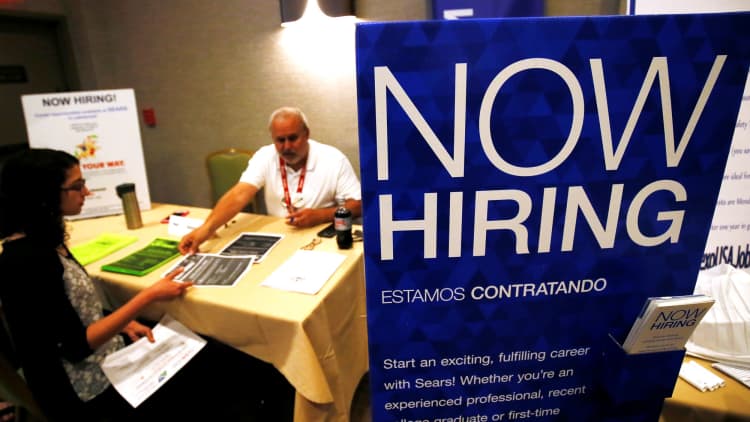
The new year got off to a strong start for job creation, with businesses adding 234,000 in January, according to a report Wednesday from ADP and Moody's Analytics.
Economists surveyed by Reuters had been looking for private payrolls to grow by 185,000.
Job creation was concentrated largely in service-related industries, which contributed 212,000 to the total.
Within that sector some of the better-paying industries showed solid gains: Trade, transportation and utilities led with 51,000, education and health services added 47,000 and professional and businesses services contributed 46,000. Leisure and hospitality services also grew by 46,000.
On the goods-producing side, manufacturing added 12,000 jobs while construction saw 9,000 new hires despite the traditionally slow month for the industry.
"The job market juggernaut marches on," Mark Zandi, chief economist at Moody's Analytics, said in a statement. "Given the strong January job gain, 2018 is on track to be the eighth consecutive year in which the economy creates over 2 million jobs. If it falls short, it is likely because businesses can't find workers to fill all the open job positions."
ADP's latest count comes with the national unemployment rate at 4.1 percent, though wage pressures remain muted. Economic growth overall has been solid, with the Atlanta Fed projecting the economy to grow 4.2 percent in the first quarter.
In an interview with CNBC, Zandi said the current pace of job growth suggests an unemployment rate of 3.5 percent by the end of 2018.
"It's obviously very strong," Zandi said of the job market.
In fact, he said the pace of gains is likely to push the Federal Reserve to get more aggressive with interest rates. The central bank has indicated the likelihood of three more quarter-point increases of its benchmark funds rate this year, but Zandi said that may not be enough to keep the economy from overheating.
"I'd be pretty surprised if they don't revise that up and give us four rate increases this year," he said. "Every time employment goes past full employment in a meaningful way, you have a recession."
"It's going to be pretty tough to land the plane on the tarmac, so the Fed's got to get going here," Zandi added.
The policymaking Federal Open Market Committee concludes its two-day meeting Wednesday, with the market not expecting a change in rates until March. However, the committee could hint at future actions.
The report also comes two days ahead of the government's closely watched nonfarm payrolls report. The ADP and Labor Department counts often differ widely — in December, ADP and Moody's reported 242,000 more private jobs (revised down from an initially reported 250,000) against the government's total of 148,000 for total nonfarm gains.
At the very least, the strong ADP January report "suggests that the weaker December reading on the official non-farm employment measure was not the start of any serious downturn in labor market conditions" Paul Ashworth, chief U.S. economist at Capital Economics, said in a note.
In terms of company size, ADP reported that new hires were evenly distributed. Mid-sized firms (50 to 499 workers) led with 91,000, while large companies added 85,000 and small businesses hired 58,000.


